A Fully Integrated Memristive Chaotic Circuit Based on Memristor Emulator with Voltage-Controlled Oscillator
Abstract
1. Introduction
2. Design of a Memristive Chaotic Circuit
2.1. The Simplest Memristive Chaotic Circuit
2.2. Design of the Memristor Emulator
2.2.1. The Memristor Emulator Circuit
2.2.2. Simulation Results
3. Integrated Circuit Design and Its Analysis
3.1. The Voltage−Controlled Oscillator
3.1.1. Implementation of the Voltage−Controlled Oscillator
3.1.2. Process Corner Simulation
3.2. Design of the Proposed Memristive Chaotic Circuit Based on a VCO
4. Layout Design and Simulation Verifications
4.1. The Layout Design
4.2. Simulation Verifications
4.2.1. Chaotic Phenomena at Different Oscillation Frequencies
4.2.2. Effect of Different Device Parameters on Chaotic Phenomena
4.2.3. Validation of Chaos
4.2.4. Performance Comparison
5. Conclusions
Author Contributions
Funding
Institutional Review Board Statement
Informed Consent Statement
Data Availability Statement
Acknowledgments
Conflicts of Interest
References
- Chua, L.O. Memristor-the missing circuit element. IEEE Trans. Circuit Theory 1971, 18, 507–519. [Google Scholar] [CrossRef]
- Chua, L.O. Memristive devices and systems. Proc. IEEE 1976, 64, 209–223. [Google Scholar] [CrossRef]
- Strukov, D.B.; Snider, G.S.; Stewart, D.R.; Williams, R.S. The missing memristor found. Nature 2008, 453, 80–83. [Google Scholar] [CrossRef] [PubMed]
- Wei, X.; Zhang, J.; Li, H.; Zuo, J. Nonlinear analysis, circuit design, and chaos optimisation application of multiscroll chaotic attractors based on novel locally active non-polynomial memristor. Nonlinear Dyn. 2024, 11, 5773–5810. [Google Scholar] [CrossRef]
- Yang, F.; Ma, J.; Wu, F. Review on memristor application in neural circuit and network. Chaos Solitons Fractals 2024, 187, 115361. [Google Scholar] [CrossRef]
- Youn, S.; Lee, J.; Kim, S.; Park, J.; Kim, K.; Kim, H. Programmable threshold logic implementations in a memristor crossbar array. Nano Lett. 2024, 24, 3581–3589. [Google Scholar] [CrossRef]
- Wang, J.; Wang, H.; Cao, Z.; Zhu, S.; Du, J.; Yang, C.; Ke, C.; Zhao, Y.; Sun, B. Logic Gate Circuits Based on CeOx/WOy Memristor for the Odd/Even Checker and Encryption/Decryption of Image Applications. Adv. Funct. Mater. 2024, 34, 2313219. [Google Scholar] [CrossRef]
- Su, B.; Cai, J.; Zhang, Y.; Wang, Y.; Wang, S.; Wen, K. A 1T2M memristor-based logic circuit and its applications. Microelectron. J. 2023, 132, 105674. [Google Scholar] [CrossRef]
- Lu, C.; Meng, J.; Yu, J.; Song, J.; Wang, T.; Zhu, H.; Sun, Q.Q.; Zhang, D.W.; Chen, L. Novel three-dimensional artificial neural network based on an eight-layer vertical memristor with an ultrahigh rectify ratio (>107) and an ultrahigh nonlinearity (>105) for neuromorphic computing. Nano Lett. 2024, 24, 2018–2024. [Google Scholar] [CrossRef]
- Jeon, K.; Ryu, J.J.; Im, S.; Seo, H.K.; Eom, T.; Ju, H.; Yang, M.K.; Jeong, D.S.; Kim, G.H. Purely self-rectifying memristor-based passive crossbar array for artificial neural network accelerators. Nat. Commun. 2024, 15, 129. [Google Scholar] [CrossRef]
- Cao, Z.; Sun, B.; Zhou, G.; Mao, S.; Zhu, S.; Zhang, J.; Ke, C.; Zhao, Y.; Shao, J. Memristor-based neural networks: A bridge from device to artificial intelligence. Nanoscale Horiz. 2023, 8, 716–745. [Google Scholar] [CrossRef] [PubMed]
- Khot, A.C.; Nirmal, K.A.; Dongale, T.D.; Kim, T.G. GeTe/MoTe2 Van der Waals Heterostructures: Enabling Ultralow Voltage Memristors for Nonvolatile Memory and Neuromorphic Computing Applications. Small 2024, 2400791. [Google Scholar] [CrossRef] [PubMed]
- Sattar, K.; Tahir, R.; Huang, H.; Akinwande, D.; Rizwan, S. Ferroelectric MXene-assisted BiFeO3 based free-standing memristors for multifunctional non-volatile memory storage. Carbon 2024, 221, 118931. [Google Scholar] [CrossRef]
- Koncha, G.; Das, N.K.; Badhulika, S. Ni3C nanosheets and PVA nanocomposite based memristor for low-cost and flexible non-volatile memory devices. Mater. Sci. Semicond. Process. 2024, 184, 108804. [Google Scholar] [CrossRef]
- Guseinov, D.; Matyushkin, I.; Chernyaev, N.; Mikhaylov, A.; Pershin, Y. Capacitive effects can make memristors chaotic. Chaos Solitons Fractals 2021, 144, 110699. [Google Scholar] [CrossRef]
- Ostrovskii, V.; Fedoseev, P.; Bobrova, Y.; Butusov, D. Structural and parametric identification of knowm memristors. Nanomaterials 2021, 12, 63. [Google Scholar] [CrossRef]
- Guo, M.; Yang, W.; Xue, Y.; Gao, Z.; Yuan, F.; Dou, G.; Li, Y. Multistability in a physical memristor-based modified Chua’s circuit. Chaos Interdiscip. J. Nonlinear Sci. 2019, 29, 043114. [Google Scholar] [CrossRef]
- Laskaridis, L.; Volos, C.; Stouboulos, I. Study of a chaotic circuit with a physical memristor as a nonlinear resistor. In Proceedings of the 2022 11th International Conference on Modern Circuits and Systems Technologies (MOCAST), Bremen, Germany, 8–10 June 2022; IEEE: New York, NY, USA, 2022; pp. 1–4. [Google Scholar]
- Minati, L.; Gambuzza, L.; Thio, W.; Sprott, J.; Frasca, M. A chaotic circuit based on a physical memristor. Chaos Solitons Fractals 2020, 138, 109990. [Google Scholar] [CrossRef]
- Kengne, J.; Njitacke Tabekoueng, Z.; Kamdoum Tamba, V.; Nguomkam Negou, A. Periodicity, chaos, and multiple attractors in a memristor-based Shinriki’s circuit. Chaos Interdiscip. J. Nonlinear Sci. 2015, 25. [Google Scholar] [CrossRef]
- Wu, R.; Wang, C. A new simple chaotic circuit based on memristor. Int. J. Bifurc. Chaos 2016, 26, 1650145. [Google Scholar] [CrossRef]
- Das, P.; Mandal, S. A physical memristor-based chaotic system and its application in colour image encryption scheme. Phys. Scr. 2023, 98, 115252. [Google Scholar] [CrossRef]
- Ma, X.; Mou, J.; Liu, J.; Ma, C.; Yang, F.; Zhao, X. A novel simple chaotic circuit based on memristor–memcapacitor. Nonlinear Dyn. 2020, 100, 2859–2876. [Google Scholar] [CrossRef]
- Ostrovskii, V.; Karimov, T.; Rybin, V.; Bobrova, Y.; Arlyapov, V.; Butusov, D. Bio-inspired neuron based on threshold selector and tunnel diode capable of excitability modulation. Neurocomputing 2025, 624, 129454. [Google Scholar] [CrossRef]
- Escudero, M.; Spiga, S.; Di Marco, M.; Forti, M.; Innocenti, G.; Tesi, A.; Corinto, F.; Brivio, S. Chua’s circuit with tunable nonlinearity based on a nonvolatile memristor: Design and realization. IEEE Trans. Circuits Syst. I Regul. Pap. 2023, 71, 62–72. [Google Scholar] [CrossRef]
- Bao, B.; Jiang, T.; Wang, G.; Jin, P.; Bao, H.; Chen, M. Two-memristor-based Chua’s hyperchaotic circuit with plane equilibrium and its extreme multistability. Nonlinear Dyn. 2017, 89, 1157–1171. [Google Scholar] [CrossRef]
- Nguyen, N.; Kaddoum, G.; Pareschi, F.; Rovatti, R.; Setti, G. A fully CMOS true random number generator based on hidden attractor hyperchaotic system. Nonlinear Dyn. 2020, 102, 2887–2904. [Google Scholar] [CrossRef]
- Valencia-Ponce, M.A.; González-Zapata, A.M.; de la Fraga, L.G.; Sanchez-Lopez, C.; Tlelo-Cuautle, E. Integrated Circuit Design of Fractional-Order Chaotic Systems Optimized by Metaheuristics. Electronics 2023, 12, 413. [Google Scholar] [CrossRef]
- Juarez-Mendoza, E.; del Angel-Diaz, F.A.; Diaz-Sanchez, A.; Tlelo-Cuautle, E. CMOS design of chaotic systems using biquadratic OTA-C filters. J. Low Power Electron. Appl. 2024, 14, 14. [Google Scholar] [CrossRef]
- Joshi, M.; Ranjan, A. Low power chaotic oscillator employing CMOS. Integration 2022, 85, 57–62. [Google Scholar] [CrossRef]
- Muthuswamy, B.; Chua, L.O. Simplest chaotic circuit. Int. J. Bifurc. Chaos 2010, 20, 1567–1580. [Google Scholar] [CrossRef]
- Gupta, S.; Rai, S.K. New grounded and floating decremental/incremental memristor emulators based on CDTA and its application. Wirel. Pers. Commun. 2020, 113, 773–798. [Google Scholar] [CrossRef]
- Sharma, P.K.; Prasad, S.S.; Tasneem, S.; Priyadarshini, B.; Ranjan, R.K. Resistive tunable memristor emulator model and its application. AEU-Int. J. Electron. Commun. 2023, 160, 154500. [Google Scholar] [CrossRef]
- Raj, N.; Ranjan, R.K.; Khateb, F. Flux-controlled memristor emulator and its experimental results. IEEE Trans. Very Large Scale Integr. (VLSI) Syst. 2020, 28, 1050–1061. [Google Scholar] [CrossRef]
- Yadav, N.; Rai, S.K.; Pandey, R. New grounded and floating memristor emulators using OTA and CDBA. Int. J. Circuit Theory Appl. 2020, 48, 1154–1179. [Google Scholar] [CrossRef]
- Ghosh, M.; Mondal, P.; Borah, S.S.; Kumar, S. Resistorless memristor emulators: Floating and grounded using OTA and VDBA for high-frequency applications. IEEE Trans. Comput.-Aided Des. Integr. Circuits Syst. 2022, 42, 978–986. [Google Scholar] [CrossRef]
- Petrović, P.B. Tunable flux-controlled floating memristor emulator circuits. IET Circuits Devices Syst. 2019, 13, 479–486. [Google Scholar] [CrossRef]
- Ranjan, R.K.; Kang, S.M. Resistorless Floating/Grounded Memristor Emulator Model with Electronic Tunability. IEEE Trans. Circuits Syst. II Express Briefs 2023, 70, 2340–2344. [Google Scholar]
- Kanyal, G.; Kumar, P.; Paul, S.K.; Kumar, A. OTA based high frequency tunable resistorless grounded and floating memristor emulators. AEU-Int. J. Electron. Commun. 2018, 92, 124–145. [Google Scholar] [CrossRef]
- Kumar, N.; Kumar, M. Low power CMOS differential ring VCO designs using dual delay stages in 0.13 μm technology for wireless applications. Microelectron. J. 2021, 111, 105025. [Google Scholar] [CrossRef]
- Jirsa, J.; Marcisovsky, M.; Jakovenko, J. Multi-threshold window discriminator based on SAR logic. J. Instrum. 2022, 17, C01042. [Google Scholar] [CrossRef]
- Fontanela, F.; Grolet, A.; Salles, L.; Hoffmann, N. Computation of quasi-periodic localised vibrations in nonlinear cyclic and symmetric structures using harmonic balance methods. J. Sound Vib. 2019, 438, 54–65. [Google Scholar] [CrossRef]
- Duan, Z.; Wang, H.; He, S.; Li, S.; Yan, S.; Zhao, X.; Yu, X.; Yang, G.; Tan, H. A fully integrated chaos generator based on voltage controlled oscillator. Microelectron. J. 2022, 126, 105514. [Google Scholar] [CrossRef]
- Joshi, M.; Ranjan, A. An autonomous chaotic and hyperchaotic oscillator using OTRA. Analog. Integr. Circuits Signal Process. 2019, 101, 401–413. [Google Scholar] [CrossRef]
- Kushwaha, A.K.; Paul, S.K. Inductorless realization of Chua’s oscillator using DVCCTA. Analog. Integr. Circuits Signal Process. 2016, 88, 137–150. [Google Scholar] [CrossRef]
- Nguyen, V.H.; Huynh, H.A.; Kim, S.; Song, H. Active EMI reduction using chaotic modulation in a buck converter with relaxed output LC filter. Electronics 2018, 7, 254. [Google Scholar] [CrossRef]
- Wannaboon, C.; Tachibana, M.; San-Um, W. A 0.18-µm CMOS high-data-rate true random bit generator through δσ modulation of chaotic jerk circuit signals. Chaos Interdiscip. J. Nonlinear Sci. 2018, 28, 063126. [Google Scholar] [CrossRef]
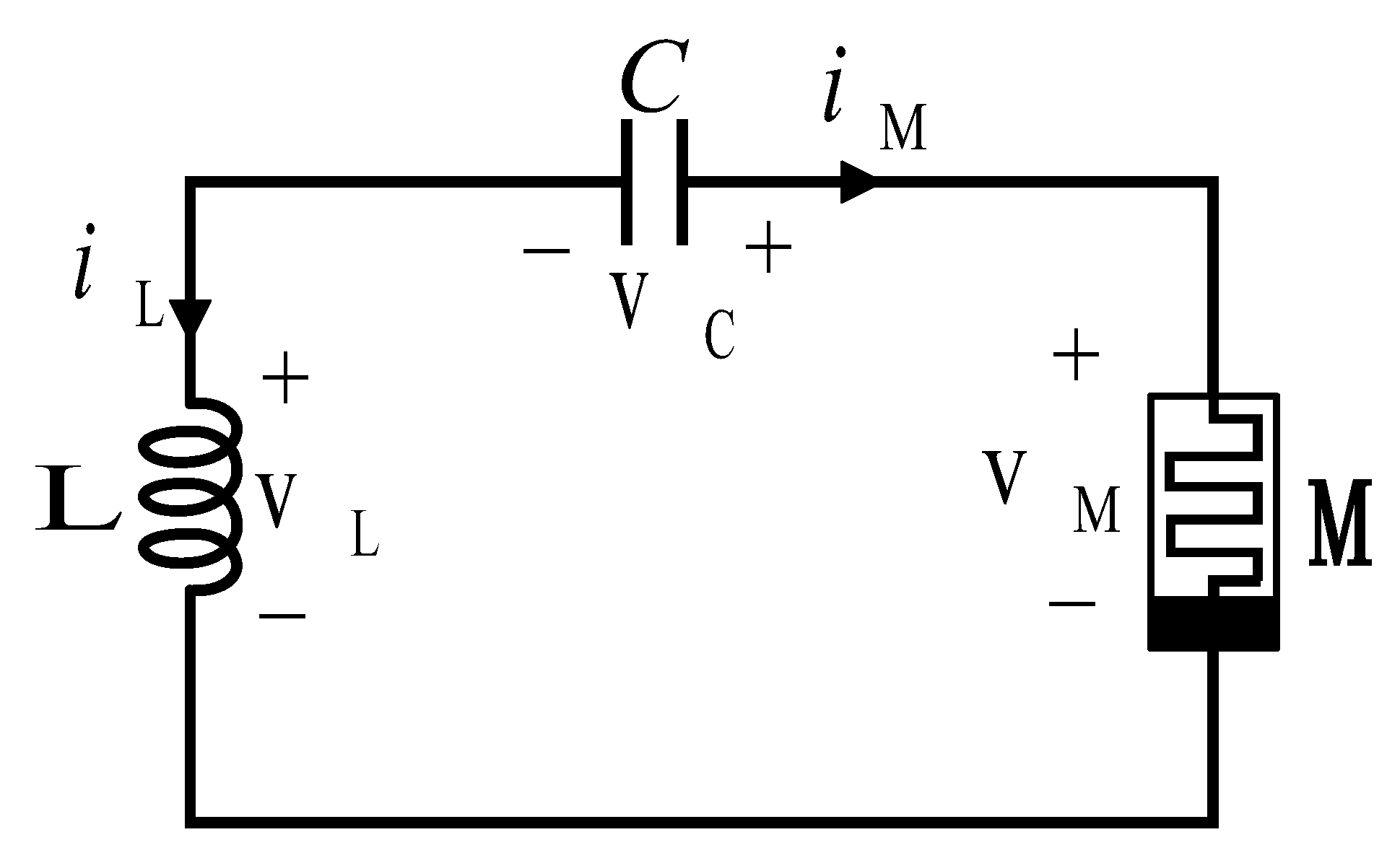
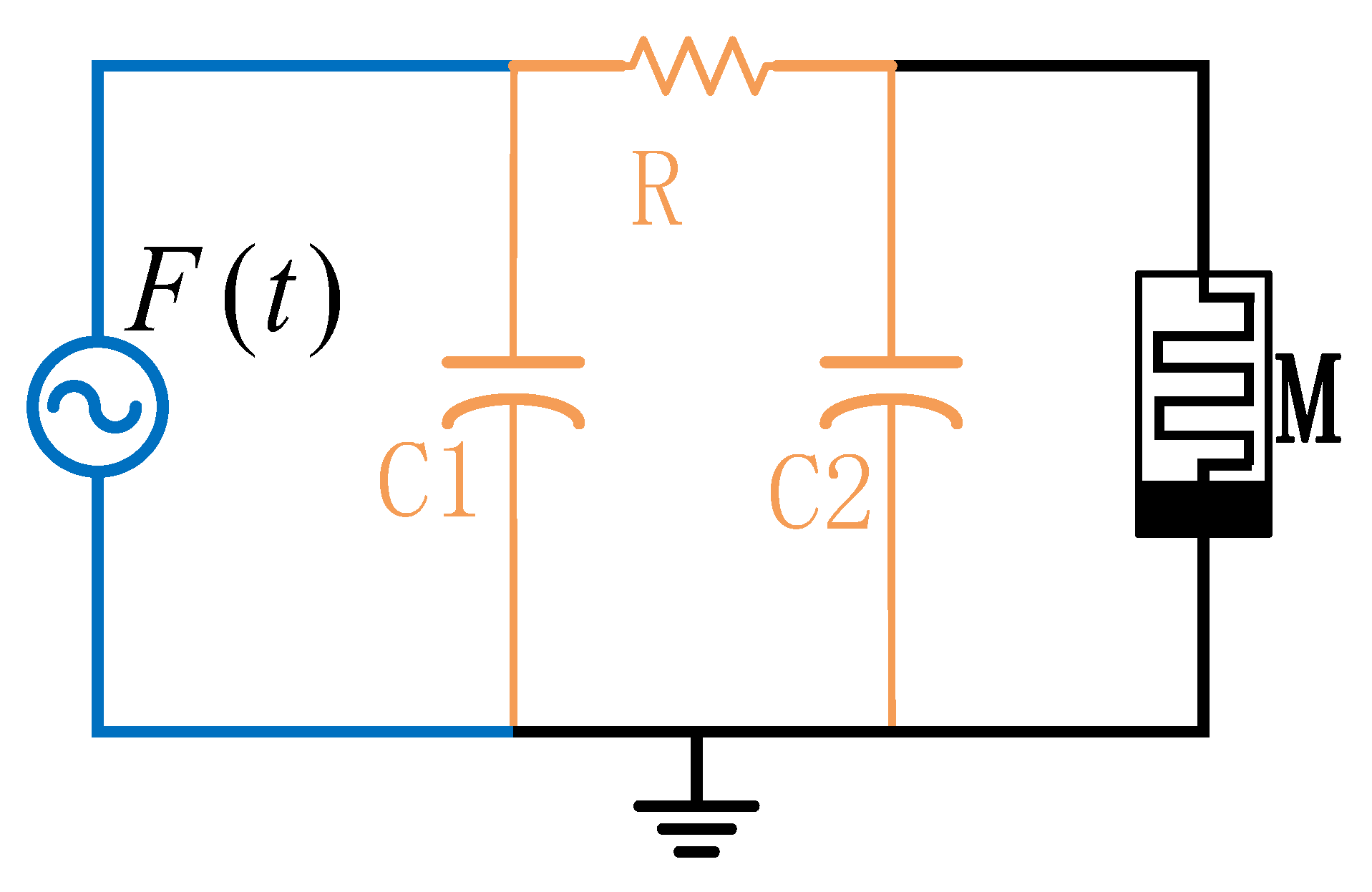
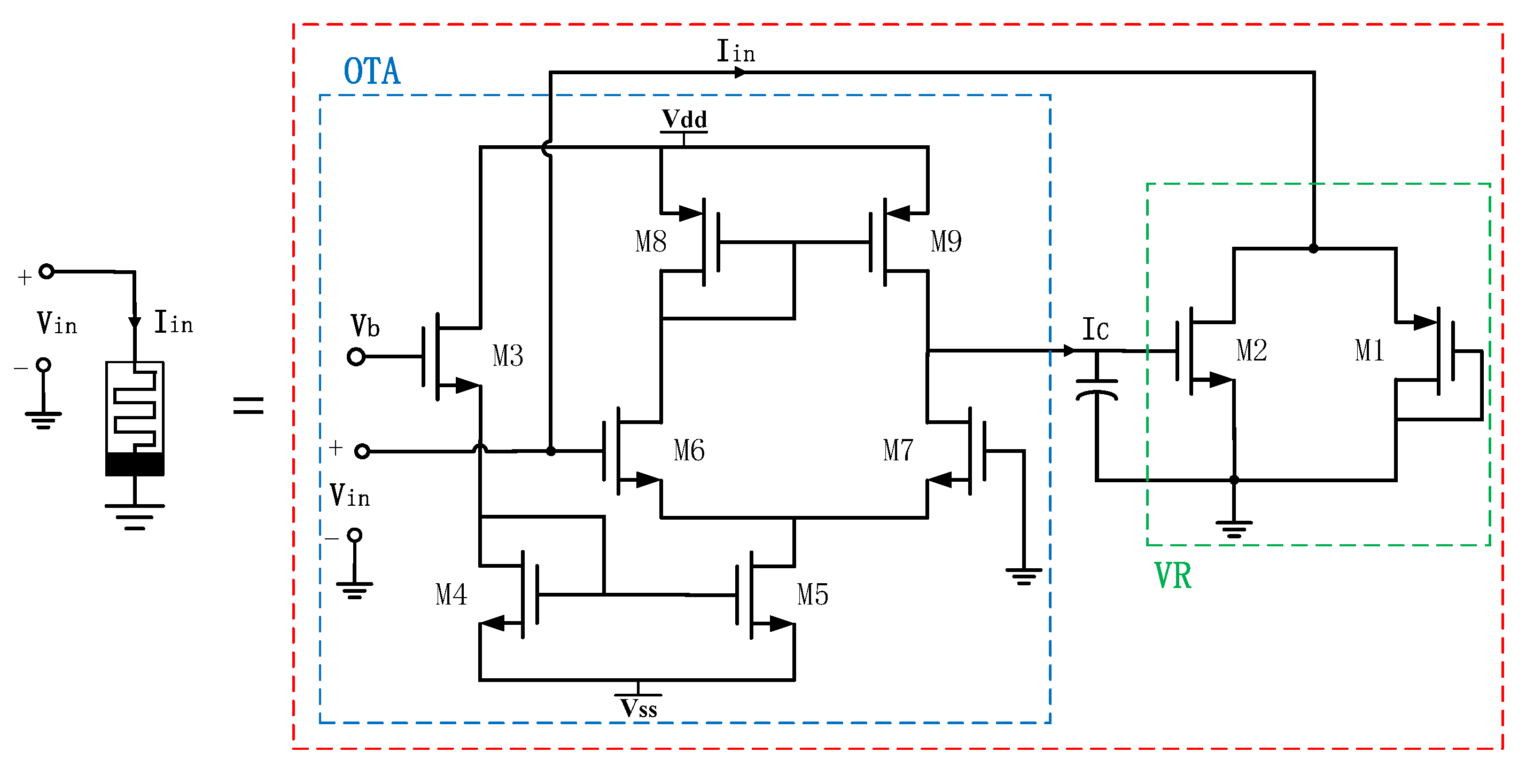
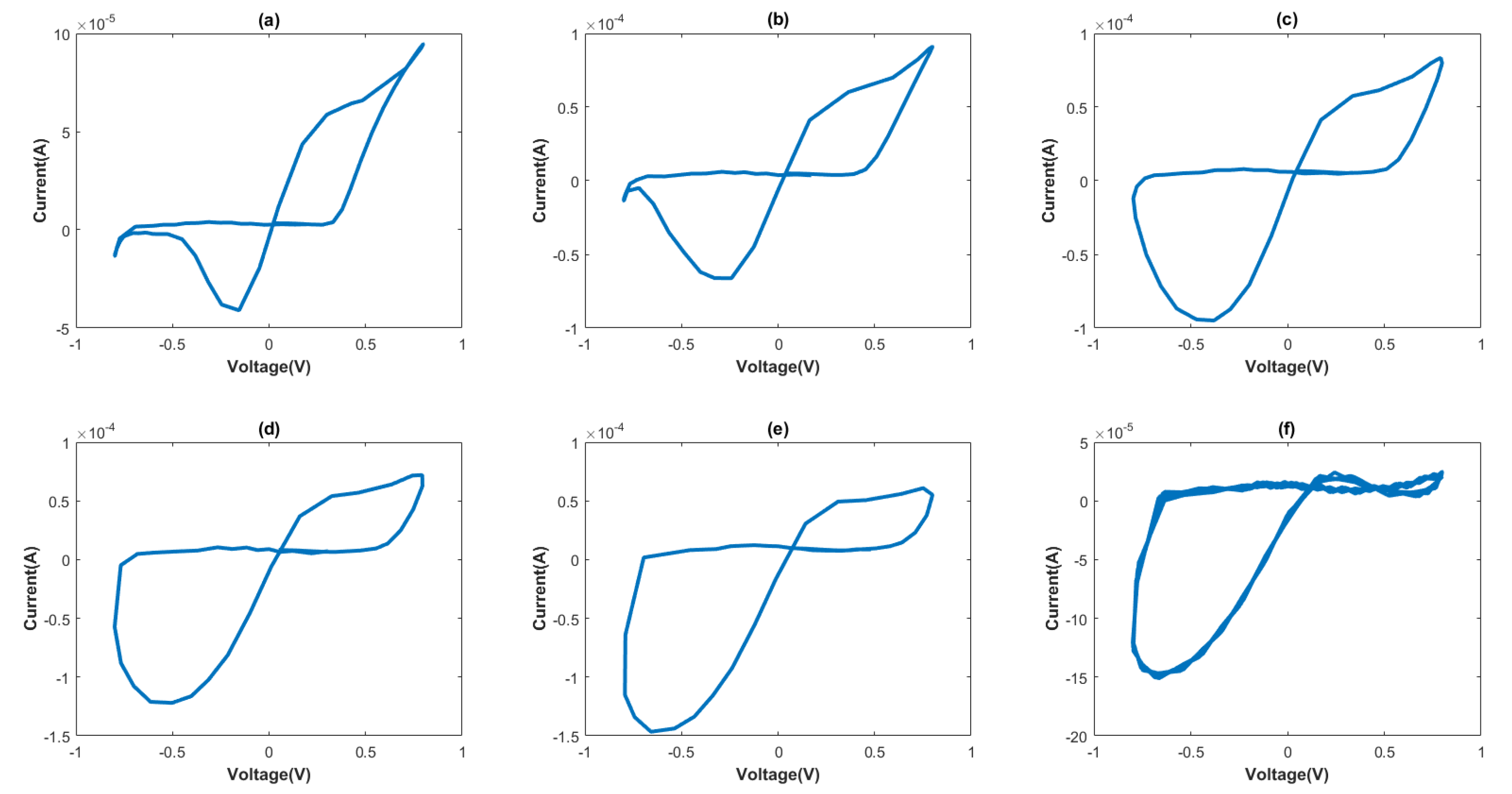
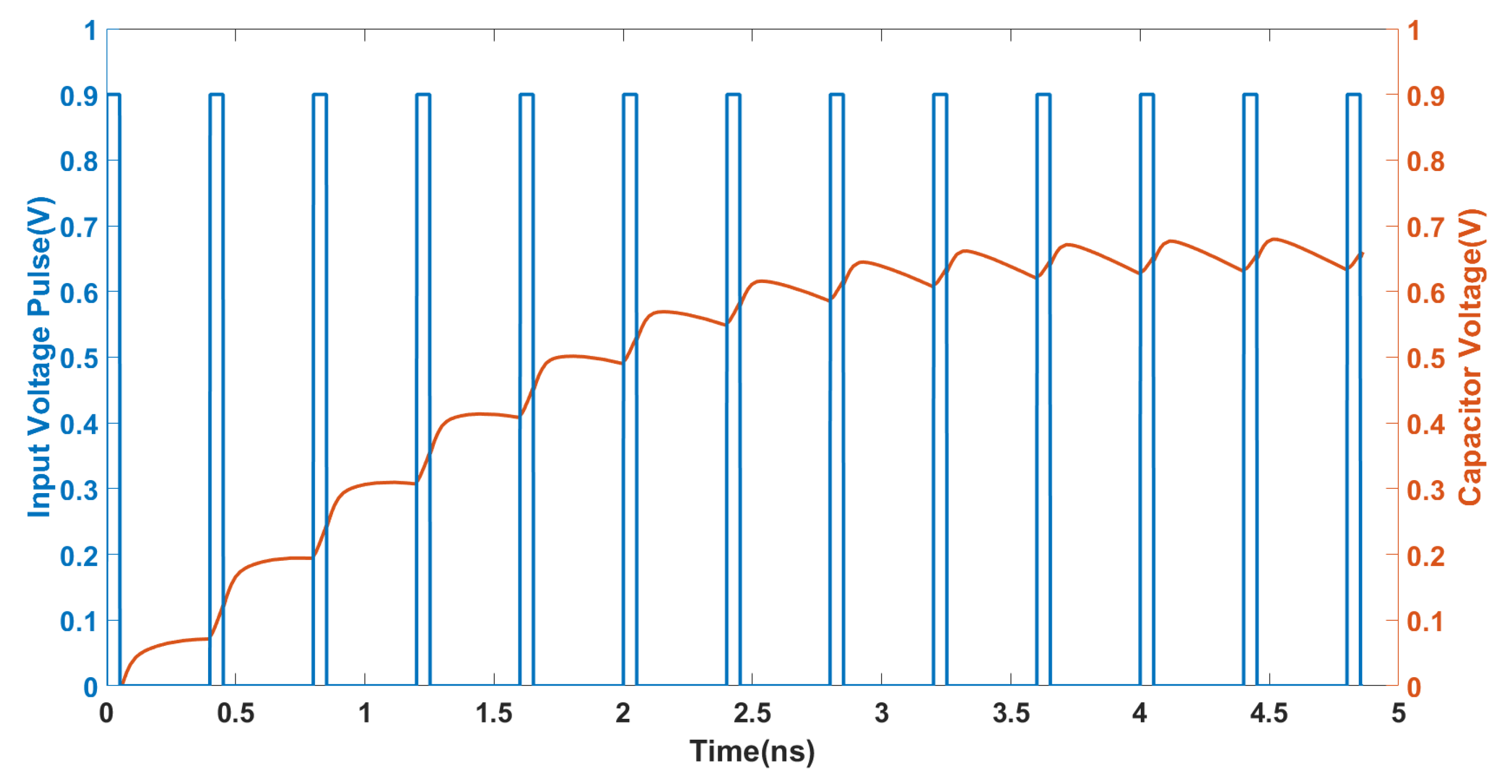
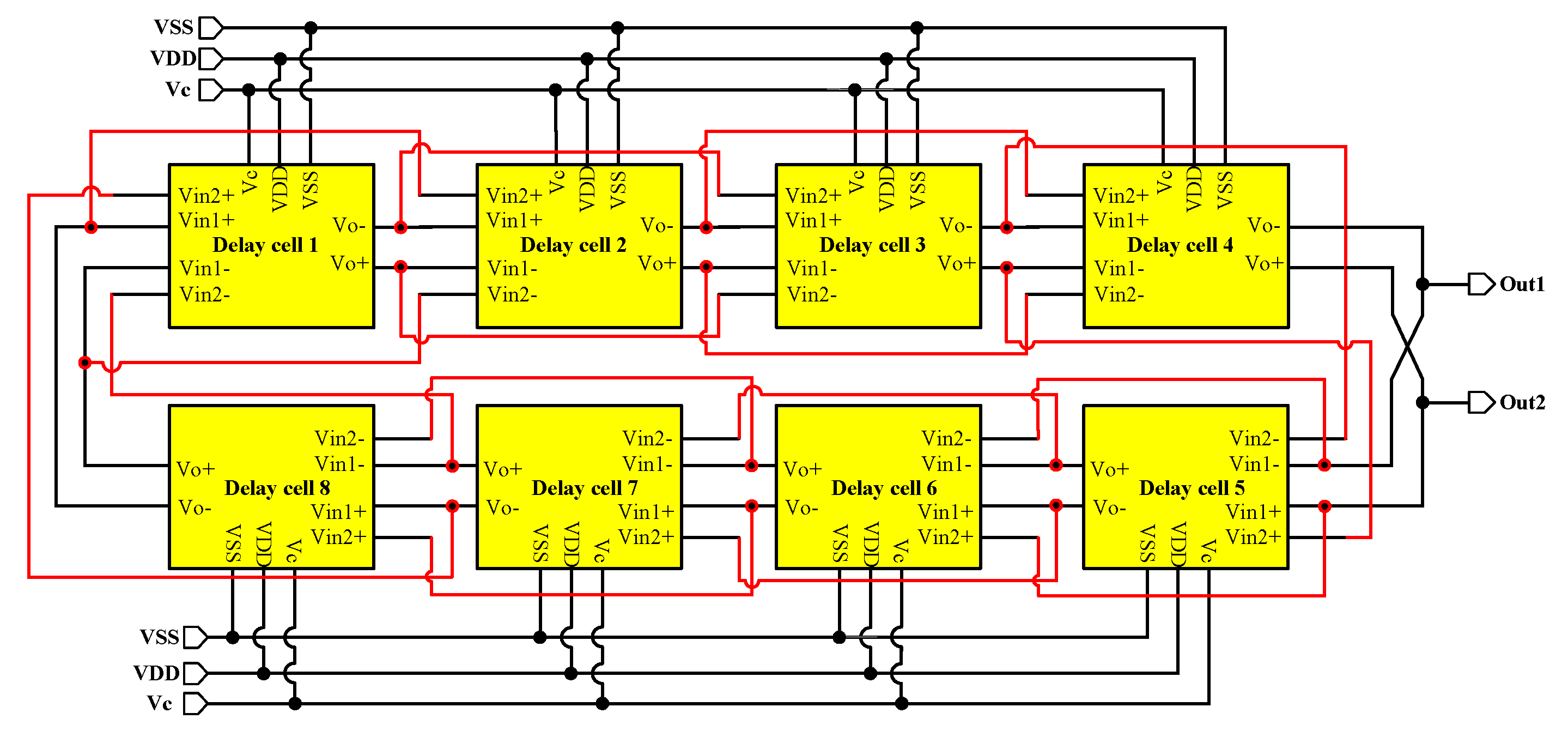
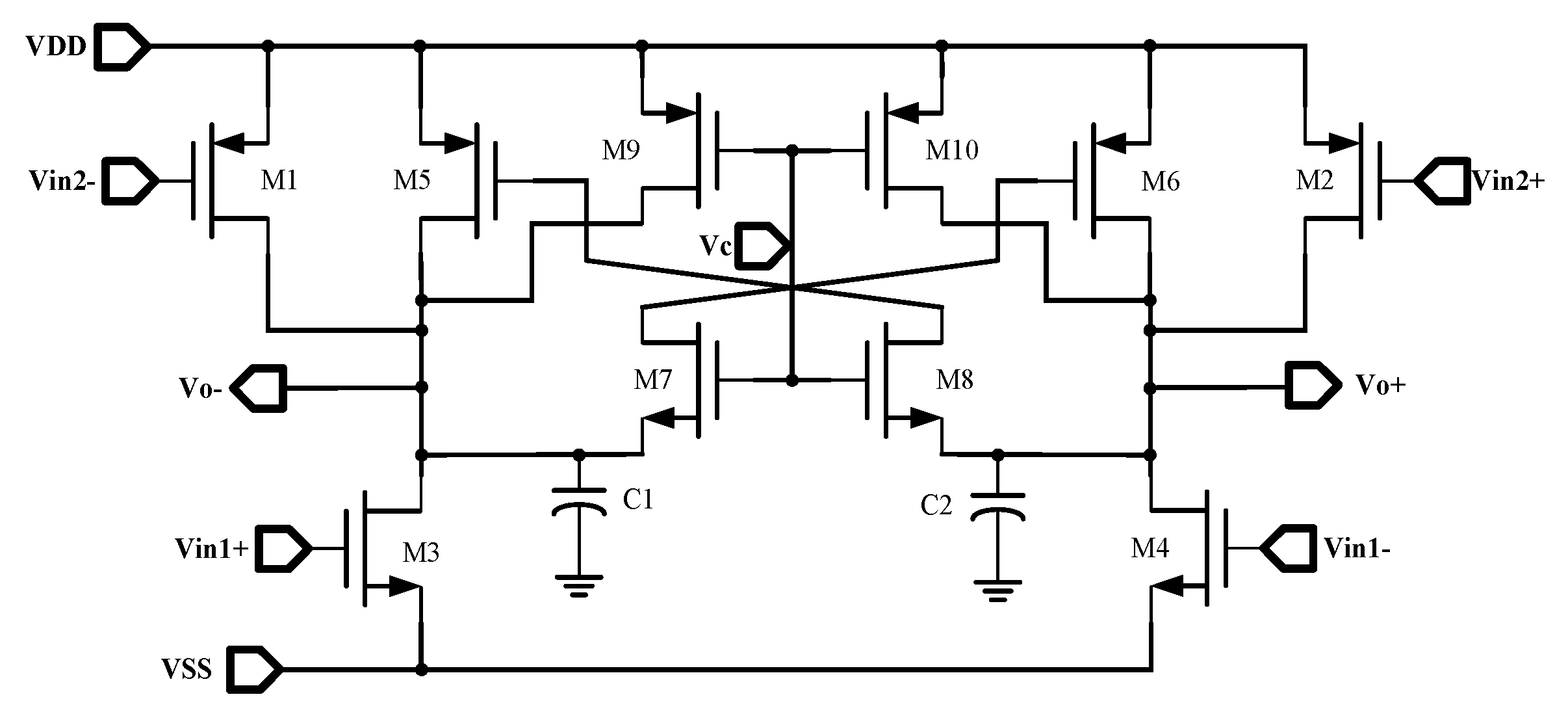
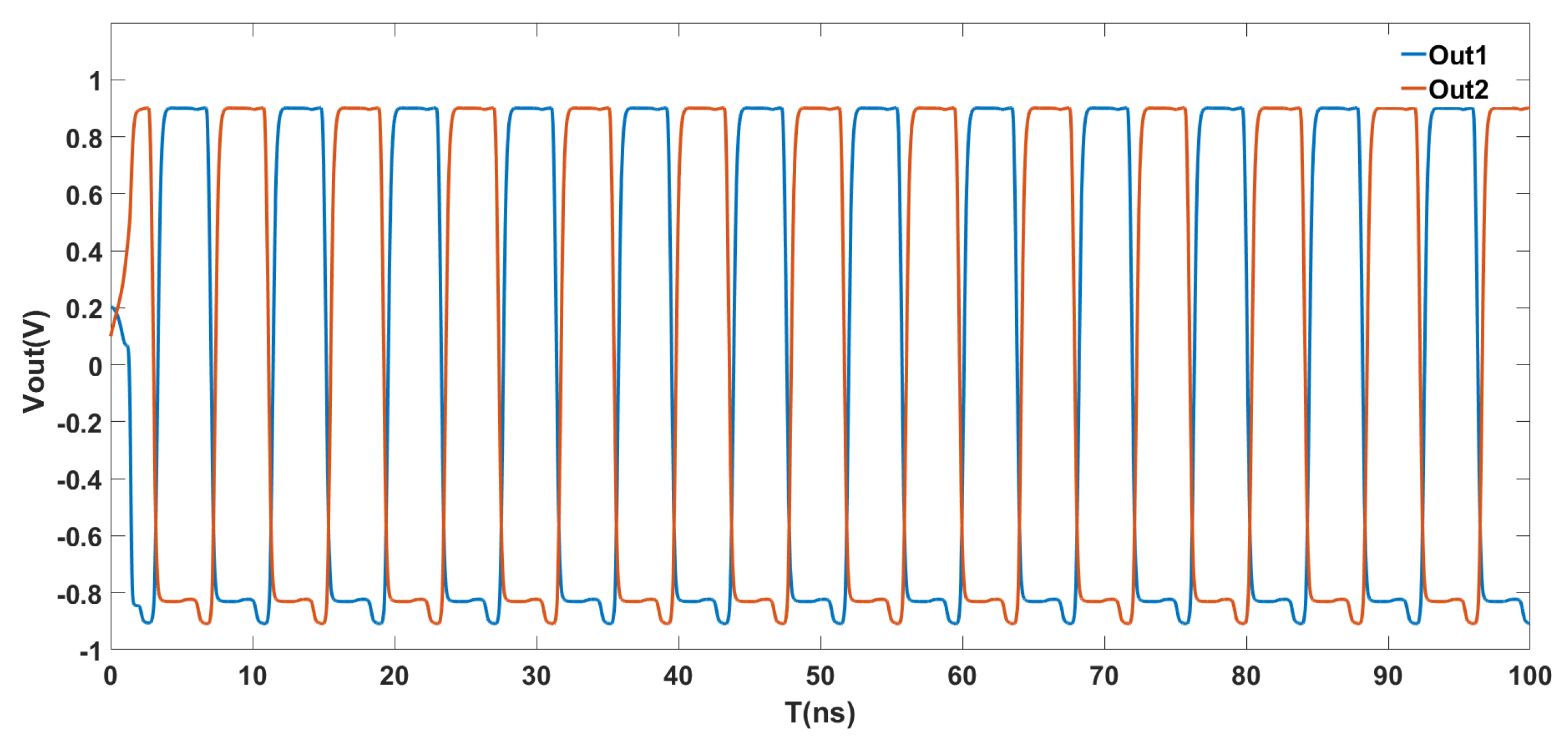
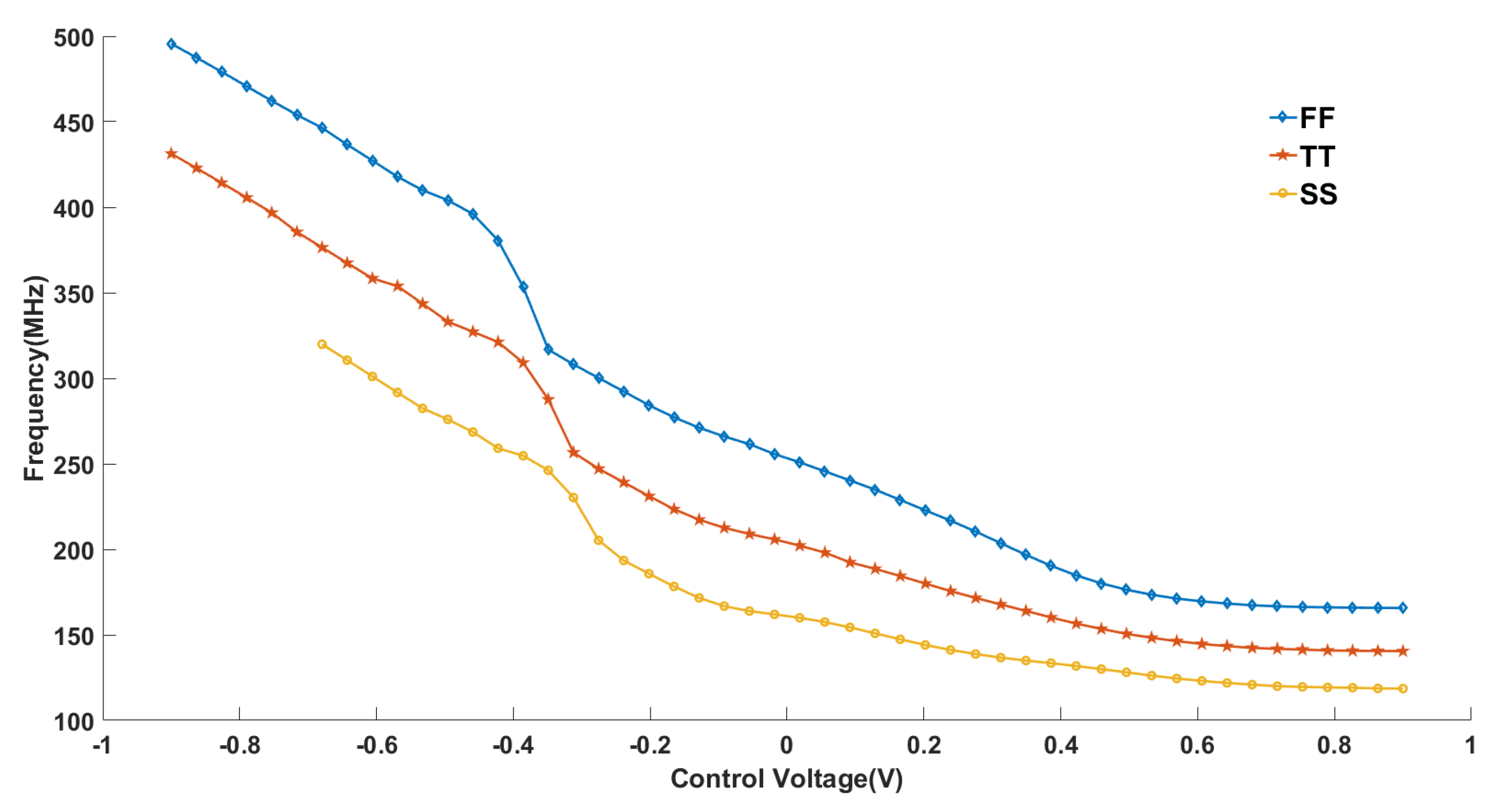
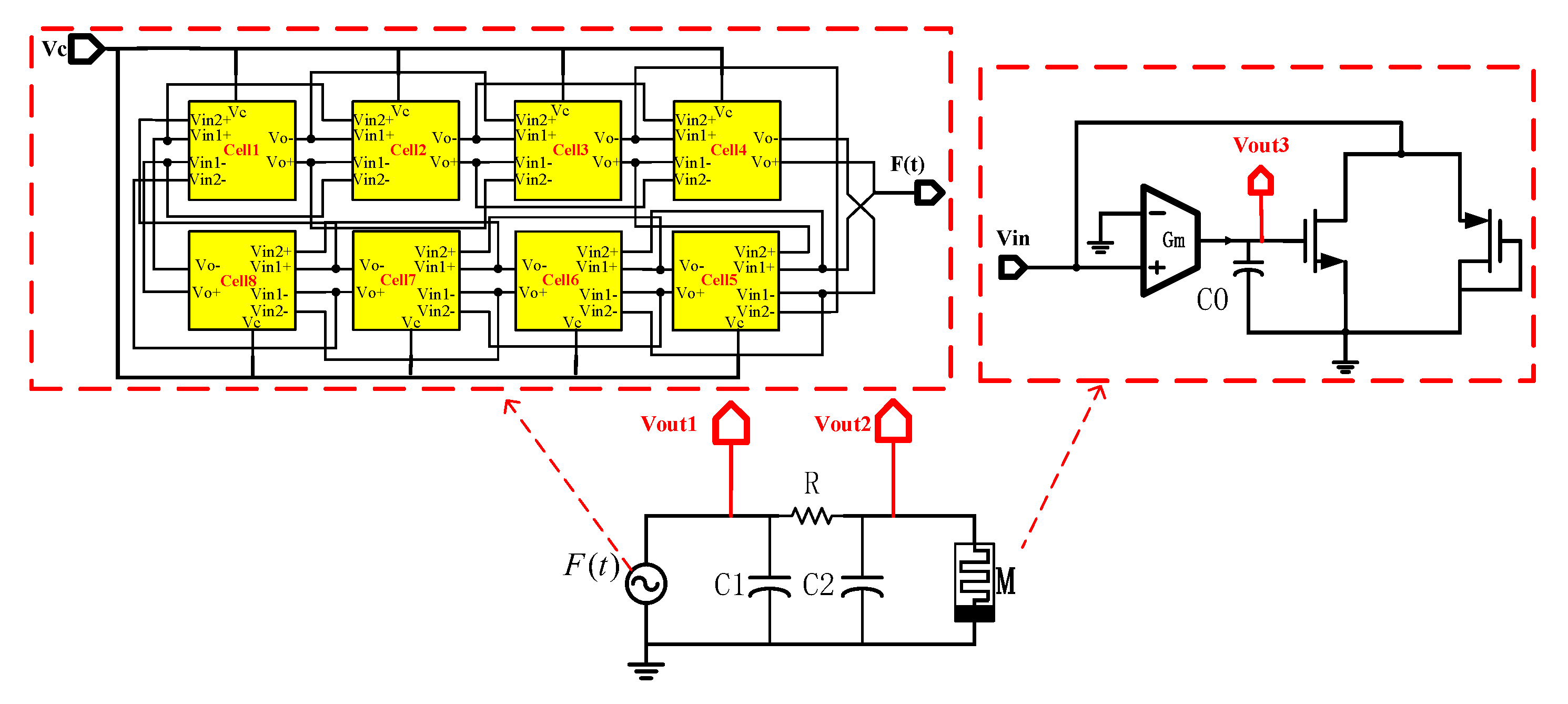
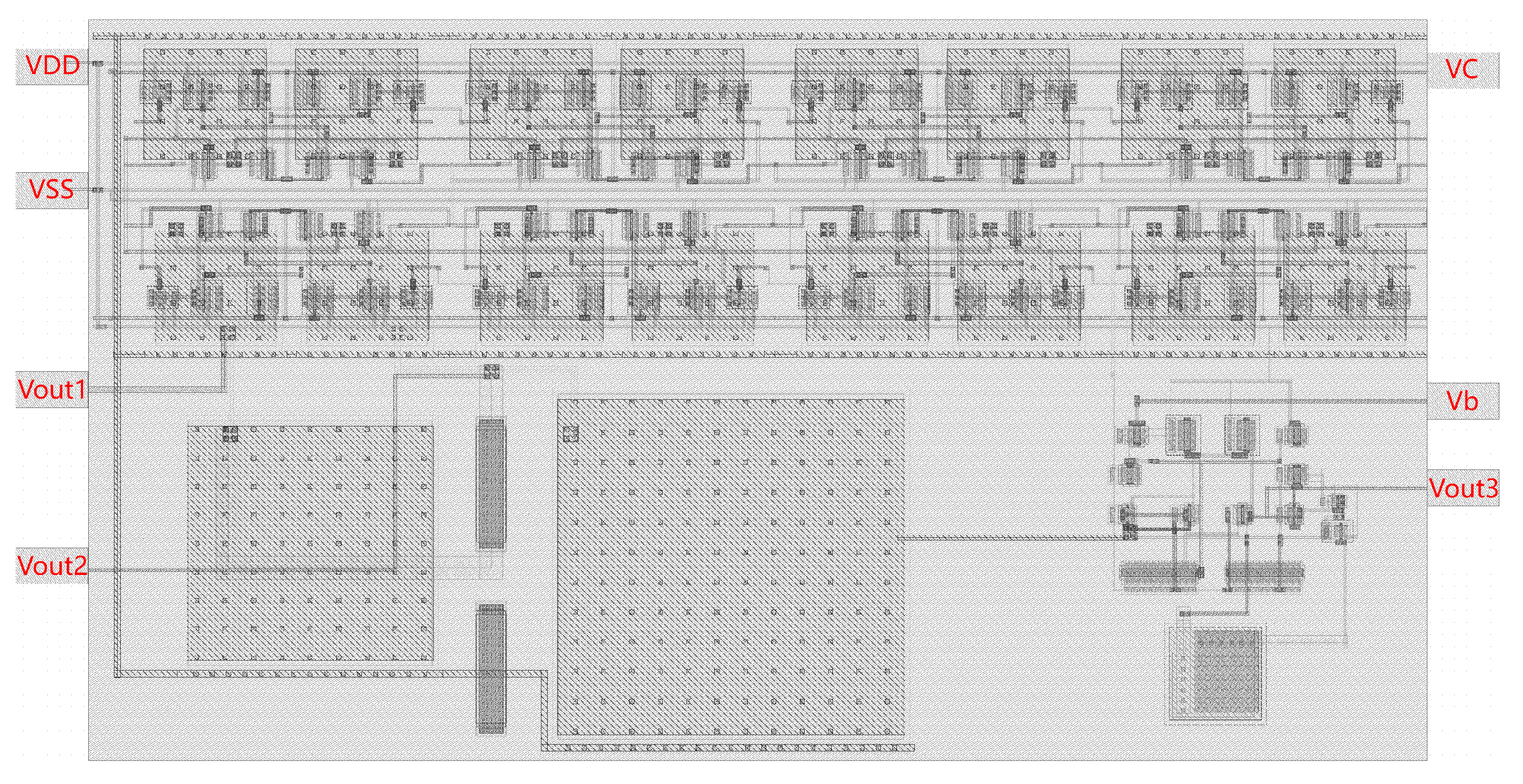
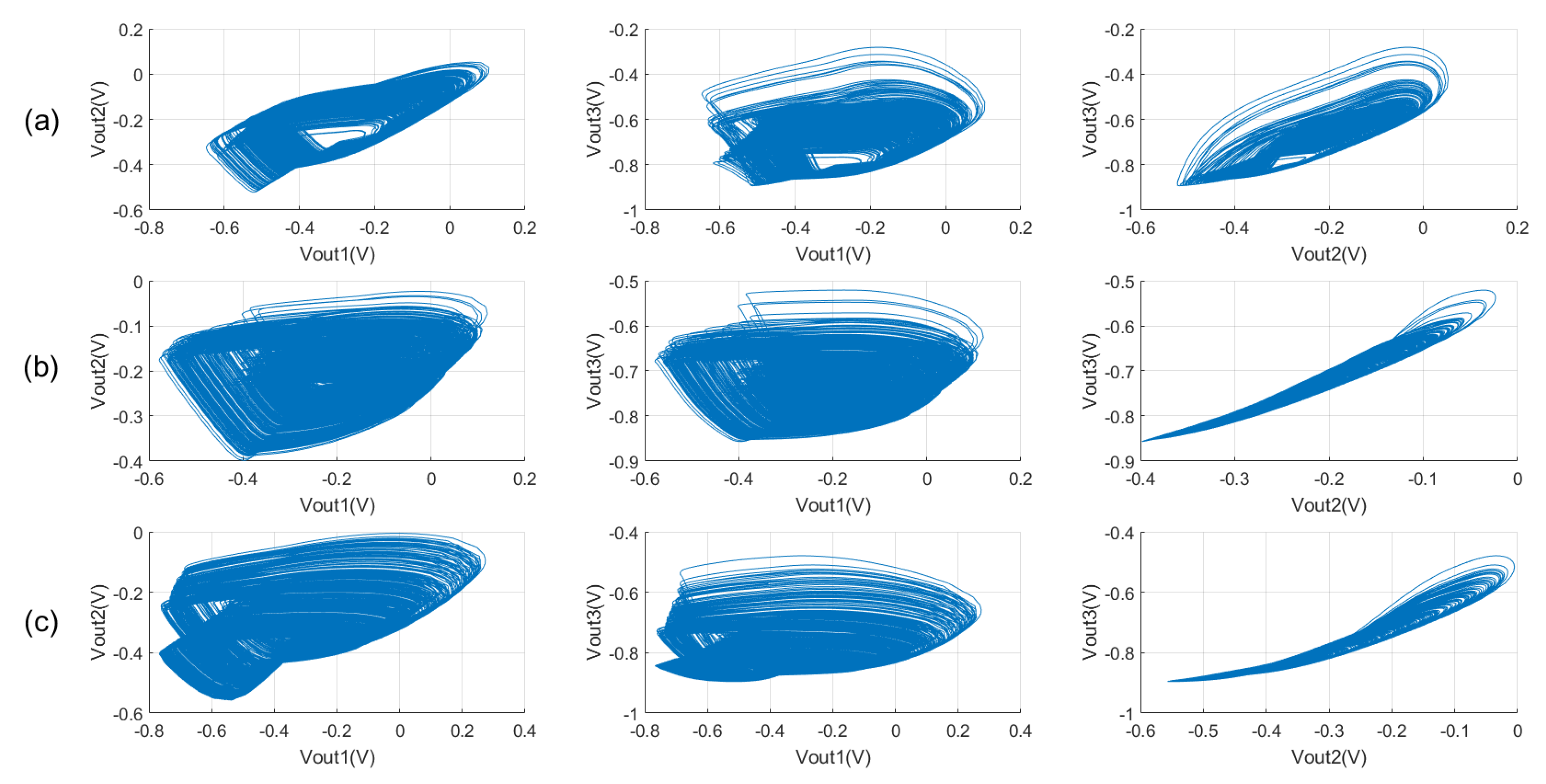
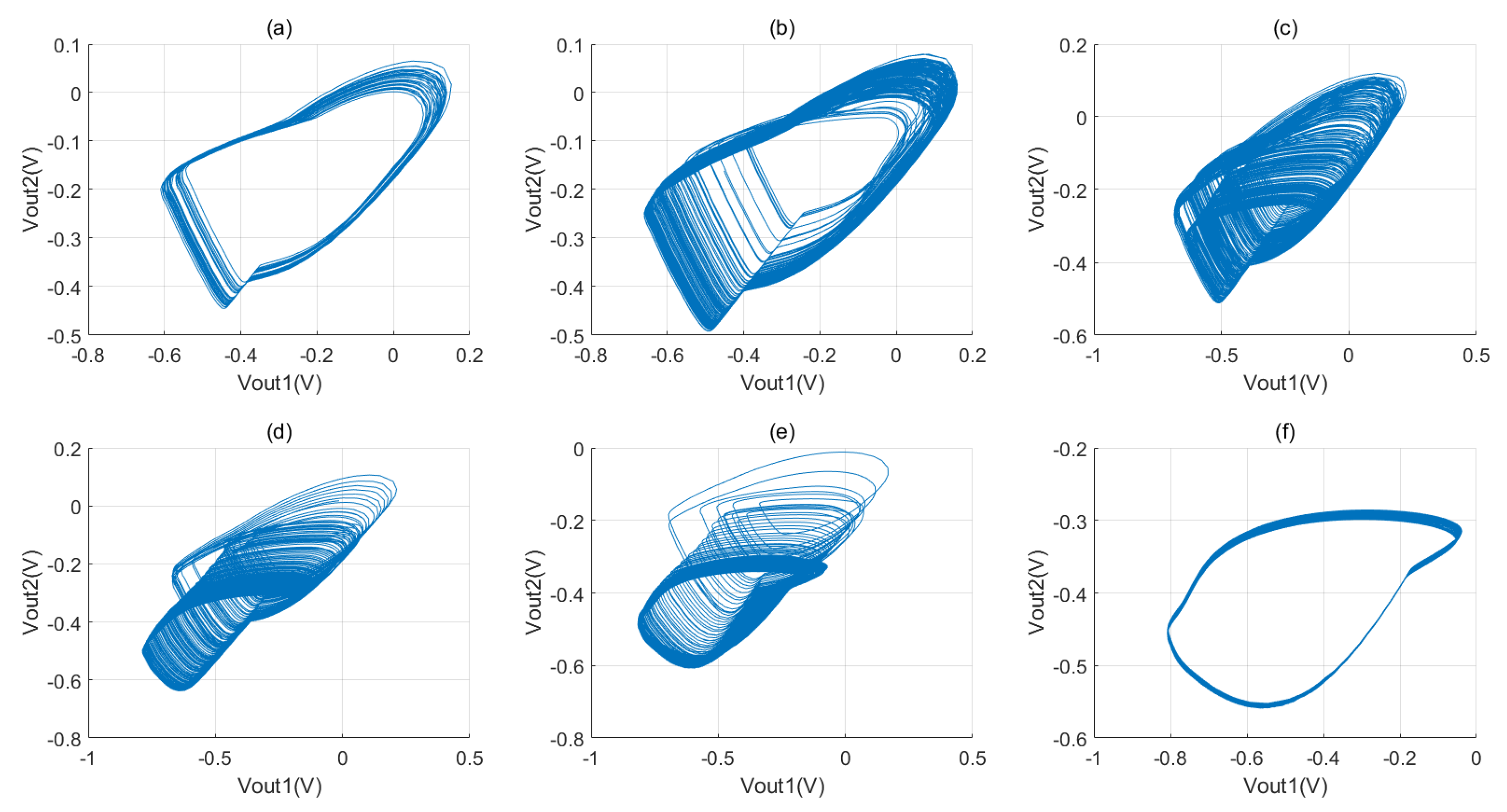
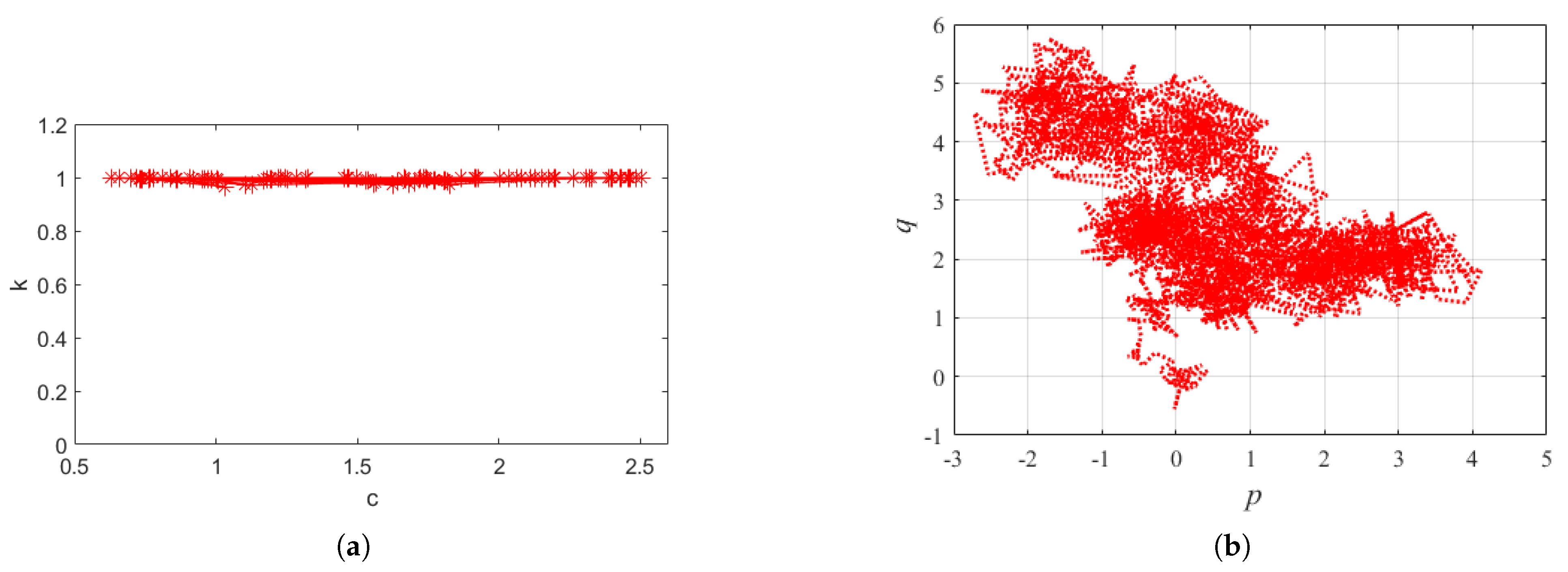
| MOS Transistor | W/L | MOS Transistor | W/L |
|---|---|---|---|
| M1 | 2.6 µm/0.2 µm | M2 | 0.6 µm/0.2 µm |
| M3 | 1.2 µm/0.6 µm | M4 | 1.2 µm/0.6 µm |
| M5 | 6.0 µm/0.6 µm | M6 | 1.2 µm/0.2 µm |
| M7 | 1.2 µm/0.2 µm | M8 | 2.5 µm/0.5 µm |
| M9 | 2.5 µm/0.5 µm |
| [Ref] | Active Component | Passive Components | Supply Voltage (V) | Operating Frequency |
|---|---|---|---|---|
| [32] | 1CFTA | 1C | ±1.2 | 9 MHz |
| [33] | 1VDCC, 1OTA | 1C | ±0.9 | 30 MHz |
| [34] | 1CCII, 1OTA | 1R, 1C | ±1.2 | 26.3 MHz |
| [35] | 1CDBA, 1OTA | 1C | ±0.9 | 1 MHz |
| [36] | 1VDBA, 1OTA | 1MOS-C | ±0.9 | 5 MHz |
| [37] | 1VDTA, 2MOS | - | ±0.9 | 50 MHz |
| [38] | 1VDCC, 1OTA | 1C | ±0.9 | 8 MHz |
| [39] | 2MO-OTA | 1C | ±1.2 | 400 KHz |
| This Work | 1OTA, 2MOS | 2R,1C | ±0.9 | 300 MHz |
| MOS Transistor | W/L | MOS Transistor | W/L |
|---|---|---|---|
| M1 | 1.0 µm/0.2 µm | M2 | 0.6 µm/0.2 µm |
| M3 | 1.2 µm/0.6 µm | M4 | 1.2 µm/0.6 µm |
| M5 | 6.0 µm/0.6 µm | M6 | 1.2 µm/0.2 µm |
| M7 | 1.2 µm/0.2 µm | M8 | 2.5 µm/0.5 µm |
| M9 | 2.5 µm/0.5 µm |
| [Ref] | Structure | Frequency (MHz) | Supply Voltage (V) | Power (mW) | Process (µm) | Chip Area (mm2) |
|---|---|---|---|---|---|---|
| [14] | Autonomous Continuous | 45.12 | 1.2 | 0.677 | 0.13 | - |
| [30] | Comparator | 5 | ±0.9 | 29.6 | 0.18 | - |
| [43] | Single-Delay VCO | 0.011–0.036 | 1.8 | 2.0892 | 0.18 | 0.039 |
| [44] | OTRA | 7.8 | ±1.25 | 23 | 0.25 | - |
| [45] | DVCCTA | 0.0027 | ±9 | 23 | 0.25 | - |
| [46] | Chaotic PWM | 1.2 | 3.3 | - | 0.18 | 0.626 |
| [47] | Bit Generator | - | 1.8 | 1.32 | 0.18 | 0.037 |
| This Work | memristor VCO | 158–286 | ±0.9 | 3.5553 | 0.18 | 0.0072 |
Disclaimer/Publisher’s Note: The statements, opinions and data contained in all publications are solely those of the individual author(s) and contributor(s) and not of MDPI and/or the editor(s). MDPI and/or the editor(s) disclaim responsibility for any injury to people or property resulting from any ideas, methods, instructions or products referred to in the content. |
© 2025 by the authors. Licensee MDPI, Basel, Switzerland. This article is an open access article distributed under the terms and conditions of the Creative Commons Attribution (CC BY) license (https://creativecommons.org/licenses/by/4.0/).
Share and Cite
Duan, Z.; Chen, J.; He, S.; Yu, X.; Wang, Q.; Zhang, X.; Xiong, P. A Fully Integrated Memristive Chaotic Circuit Based on Memristor Emulator with Voltage-Controlled Oscillator. Micromachines 2025, 16, 246. https://doi.org/10.3390/mi16030246
Duan Z, Chen J, He S, Yu X, Wang Q, Zhang X, Xiong P. A Fully Integrated Memristive Chaotic Circuit Based on Memristor Emulator with Voltage-Controlled Oscillator. Micromachines. 2025; 16(3):246. https://doi.org/10.3390/mi16030246
Chicago/Turabian StyleDuan, Zhikui, Jiahui Chen, Shaobo He, Xinmei Yu, Qiang Wang, Xin Zhang, and Peng Xiong. 2025. "A Fully Integrated Memristive Chaotic Circuit Based on Memristor Emulator with Voltage-Controlled Oscillator" Micromachines 16, no. 3: 246. https://doi.org/10.3390/mi16030246
APA StyleDuan, Z., Chen, J., He, S., Yu, X., Wang, Q., Zhang, X., & Xiong, P. (2025). A Fully Integrated Memristive Chaotic Circuit Based on Memristor Emulator with Voltage-Controlled Oscillator. Micromachines, 16(3), 246. https://doi.org/10.3390/mi16030246








